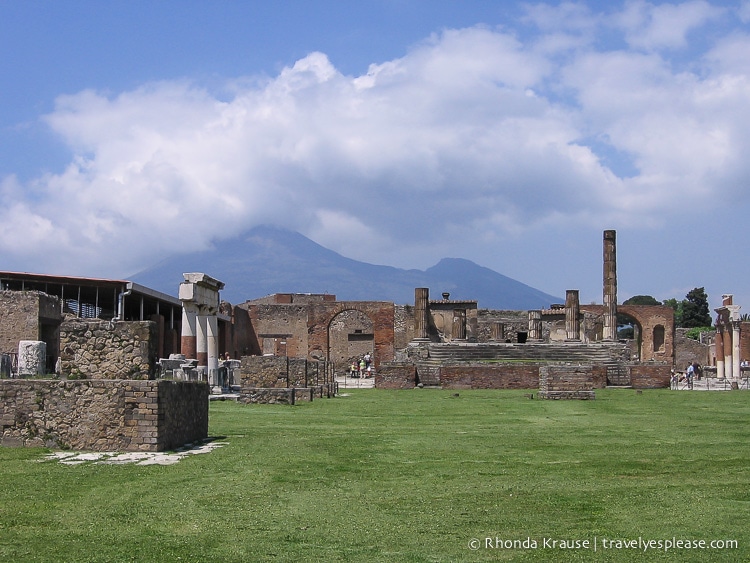Photo of the Week: Pompeii and Mt. Vesuvius
Purchases made through links earn us a small commission, at no extra cost to you.
The origins of Pompeii may be unfamiliar to most, but the city’s catastrophic demise is a story known around the world.
Pompeii was founded by the Campanian Oscans in the sixth or seventh century BC. The city was built on prehistoric lava from the precariously close Mount Vesuvius. In 80 BC, Pompeii was captured by the Romans and went on to grow to a sophisticated city of 20,000.
Pompeii was still in the process of rebuilding after a devastating earthquake in AD 63, when disaster struck again. On August 24 AD 79, Vesuvius violently erupted, burying Pompeii under a thick layer of volcanic ash and burning stone. About 2,000 people were killed and the city was eventually forgotten.

Pompeii was rediscovered about 1,500 years later in 1599, during the digging of an underground channel. However, nothing came of the discovery. The frescoes that were uncovered by architect Domenico Fontana, were covered over again, perhaps as an act of censorship due to their sexual content.
It wasn’t until 1748 that intentional excavations of Pompeii were begun by Spanish military engineer Rocque Joaquin de Alcubierre. Today, about two-thirds of the city have been excavated.
Pompeii is now one of Italy’s most visited tourist destinations. However, the archaeological site has been plagued with controversy. Overtourism, environmental weathering, vandalism, improper excavation work and underfunding of conservation projects are contributing to the deterioration of the site.
More Italy Destinations and Travel Guides
- Ostia Antica- Harbour City of Ancient Rome
- The Roman Forum- History, Monuments and Tips for Visiting
- Palatine Hill and Domitian’s Palace- Roman History, Mythology and Ruins
- Porto Venere and Cinque Terre
